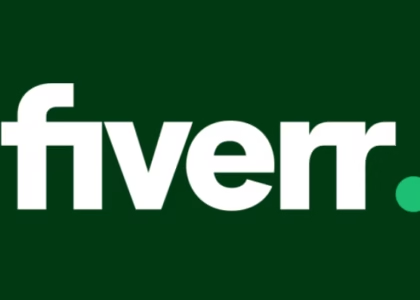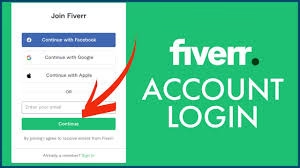Rank on Google Ever wondered why some websites pop up instantly when you search on Google, while others are buried pages deep? That’s the magic—and science—of ranking on Google. Whether you’re a blogger, small business owner, or digital marketer, ranking high on Google can skyrocket your visibility, leads, and sales. But it’s not magic—it’s strategy.
Why Google Ranking Matters
Think of Google as the gatekeeper of the internet. Over 90% of all online experiences start with a search engine, and Google dominates that space. The higher your site ranks, the more likely users are to click your link. That means more traffic, more trust, and more conversions.
How Google Determines Rankings
Google uses a complex algorithm with over 200 ranking factors. These include everything from content quality and mobile-friendliness to backlinks and user experience. Understanding how the algorithm works is key to mastering SEO.
Understanding Google’s Algorithm
Core Updates Explained
Google rolls out core updates several times a year. These updates tweak how content is evaluated, often focusing on improving search quality. Sites that consistently offer valuable, relevant, and trustworthy content typically benefit.
E-E-A-T: Experience, Expertise, Authoritativeness, Trustworthiness
E-E-A-T is a major framework Google uses to evaluate content. It asks:
- Does the content creator have experience?
- Are they an expert on the topic?
- Is the site authoritative in its niche?
- Can users trust the content?
RankBrain, BERT, and Helpful Content Update
- RankBrain helps Google understand search intent using machine learning.
- BERT focuses on natural language processing.
- The Helpful Content Update favors content made for people, not just for ranking.
Keyword Research Fundamentals
Choosing the Right Keywords
Start by identifying keywords your audience actually types into Google. Use tools like Google Keyword Planner or Ubersuggest to find high-volume, low-competition keywords.
Long-Tail vs. Short-Tail Keywords
- Short-tail: “shoes” – huge competition, vague intent.
- Long-tail: “best running shoes for flat feet men” – specific, less competition, higher conversion.
Keyword Tools You Should Be Using
- Ahrefs
- SEMrush
- Ubersuggest
- Google Trends
- AnswerThePublic
On-Page SEO Techniques
Crafting the Perfect Meta Title and Description
Your meta title is the first thing people see in search results. Make it catchy, include your main keyword, and stay under 60 characters. Descriptions should be persuasive and under 160 characters.
Header Tags and Content Structure
Use H1 for your main title, H2 for subheadings, and H3-H4 for more specific points. This not only helps readers navigate but also helps Google understand your content.
Optimizing for Keywords Without Stuffing
Use your main keyword naturally in the title, first paragraph, headers, and conclusion. Sprinkle in related keywords and synonyms throughout.
Creating High-Quality, Engaging Content
Writing for People First, Google Second
Search engines love content that users love. Write as if you’re talking to a friend—be clear, concise, and engaging.
Using Media and Visuals Effectively
Images, videos, infographics, and charts not only enhance user experience but also improve SEO through image search and reduced bounce rates.
Updating and Refreshing Old Content
Google loves fresh content. Update stats, improve readability, and add new sections to breathe life into old posts.
Technical SEO Essentials
Site Speed and Mobile Responsiveness
A slow site = high bounce rate = lower rankings. Use tools like Google PageSpeed Insights and make sure your site is mobile-friendly.
XML Sitemaps and Robots.txt
Sitemaps help search engines index your site. Robots.txt tells them what to ignore. Make sure both are properly configured.
HTTPS and Secure Browsing
Security matters. Google gives preference to HTTPS sites over HTTP. It’s a trust signal for users and search engines alike.
Mobile-First Indexing
What It Means and Why It Matters
Google now predominantly uses the mobile version of your site for indexing and ranking. If your desktop version is polished but mobile is broken—you’re in trouble.
Mobile Optimization Tips
- Use responsive design
- Eliminate pop-ups and intrusive ads
- Ensure fast mobile load times
User Experience (UX) and Core Web Vitals
Page Experience Signals
Google now ranks pages based on:
- Largest Contentful Paint (LCP)
- First Input Delay (FID)
- Cumulative Layout Shift (CLS)
How to Improve Loading, Interactivity, and Visual Stability
- Optimize images
- Minimize CSS and JavaScript
- Use lazy loading
Backlinks and Off-Page SEO
Importance of Backlinks in Google Ranking
Backlinks = Votes of confidence. Google sees them as endorsements from other websites, especially if they come from high-authority domains.
How to Build Quality Links Naturally
- Guest posting
- Digital PR
- Broken link building
- Skyscraper technique
Avoiding Black Hat Tactics
Buying links or using PBNs might offer quick wins but often results in penalties. Focus on white-hat methods for sustainable growth.
Local SEO Strategies
Google Business Profile Optimization
Claim and fully optimize your GBP. Add images, business hours, and respond to reviews.
Local Citations and Reviews
List your business on directories like Yelp, Bing Places, and Apple Maps. Encourage happy customers to leave reviews.
Geo-Targeted Keywords
Incorporate keywords like “plumber in Chicago” or “best sushi NYC” to rank for location-based searches.
Voice Search and Featured Snippets
Optimizing for Conversational Keywords
People using voice search phrase queries like questions. Optimize for “how,” “what,” and “where” queries.
Structured Data and Schema Markup
Use schema to help search engines better understand your content and qualify for rich snippets.
Social Signals and Content Sharing
The Role of Social Media in SEO
While social signals aren’t direct ranking factors, shares drive traffic, increase visibility, and can lead to natural backlinks.
Encouraging Shares and Engagement
- Add social sharing buttons
- Ask users to share at the end of content
- Create bite-sized graphics for platforms
Measuring and Tracking SEO Success
Using Google Analytics and Search Console
- GA shows how users interact with your site.
- GSC shows impressions, clicks, average position, and issues like indexing errors.
Key Metrics to Monitor
- Organic traffic
- Bounce rate
- Average time on site
- Keyword rankings
- Backlink profile
Common SEO Mistakes to Avoid
Keyword Cannibalization
When multiple pages target the same keyword, they compete against each other. Fix it by merging or differentiating the content.
Thin Content and Duplicate Pages
Every page should offer value. Avoid pages with little content or copied material. Google frowns upon this big time.
Future Trends in Google Ranking
AI and Machine Learning in Search
Search engines are becoming more intuitive. Expect search results to become even more personalized based on behavior and preferences.
SEO in a Cookie-less World
With privacy becoming a top priority, marketers must adapt. Focus on first-party data and meaningful user engagement.
Conclusion
Ranking on Google isn’t just about playing the algorithm. It’s about creating helpful, engaging, and trustworthy content while offering an excellent user experience. Master the fundamentals, stay updated on changes, and keep your users at the heart of your strategy. That’s how you climb the ranks—and stay there.
FAQs
1. How long does it take to rank on Google?
It can take anywhere from a few weeks to several months, depending on competition, niche, and your SEO efforts.
2. What’s the most important factor in ranking?
Content quality and backlinks are two of the biggest factors. But technical SEO and user experience also play key roles.
3. Can you rank without backlinks?
Yes, especially in low-competition niches. However, backlinks greatly increase your chances of ranking faster.
4. How often should I update my content?
Aim to update key pieces every 3-6 months to keep them fresh and relevant.
5. Is SEO better than paid ads?
SEO offers long-term, sustainable results and is cost-effective in the long run, while ads bring short-term traffic.
Please don’t forget to leave a review.
Explore more by joining me on Patreon
4o
Is this conversation helpful so far?Output in Default language Deutsch English Español Français Italiano Português Polski Українська ————— Af Soomaali Afrikaans Azərbaycan dili Bahasa Indonesia Bahasa Malaysia Bahasa Melayu Basa Jawa Basa Sunda Bosanski jezik Català Čeština Chichewa Cymraeg Dansk Deutsch Eesti keel English English (UK) English (US) Español Esperanto Euskara Français Gaeilge Galego Hrvatski jezik isiXhosa isiZulu Íslenska Italiano Kiswahili Kreyòl Ayisyen Kurdî Latīna Latviešu valoda Lëtzebuergesch Lietuvių kalba Magyar Malagasy Malti Māori Nederlands Norsk O’zbek tili Polski Português Română Sesotho Shqip Slovenčina Slovenščina Suomi Svenska Tagalog Tatarça Türkçe Việt ngữ Yorùbá Ελληνικά Беларуская мова Български език Кыр Қазақ тілі Македонски јазик Монгол хэл Русский Српски језик Тоҷикӣ Українська ქართული Հայերեն ייִדיש עברית ئۇيغۇرچە اردو العربية پښتو فارسی नेपाली मराठी हिन्दी বাংলা ਪੰਜਾਬੀ ગુજરાતી ଓଡ଼ିଆ தமிழ் తెలుగు ಕನ್ನಡ മലയാളം සිංහල ไทย ພາສາລາວ ဗမာစာ ភាសាខ្មែរ 한국어 中文 繁體中文 日本語 Tone Default Emotional _________Upgrade for more Writing Style Default Poetic _________Upgrade for more Continue — Select an action — Clarify Exemplify Expand Explain Rewrite Shorten _________Upgrade to activate
Search






